Several insects feed on Missouri trees but most do little damage and the trees perform well year after year in spite of the insects. Many of the pests are best observed, noted and forgotten. Others can be controlled with a minimum of time and effort when they occur. The most destructive of the common pests are borers. Once established in a tree the tree's lifespan is most certainly shortened. The following are some of the top insect problems of trees.
|
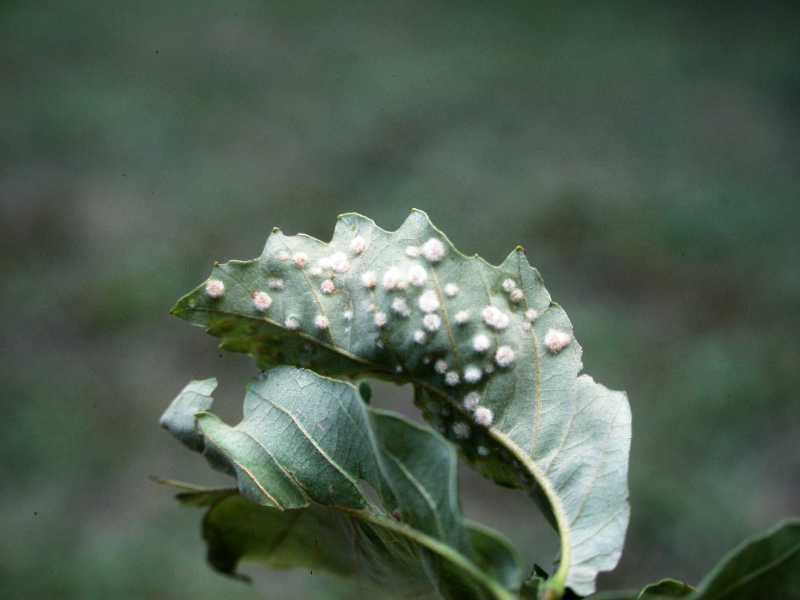 |
Galls
Leaf galls are common on the leaves of many trees and are not harmful to the tree. Most are caused by insects, which may be visible if you cut open the gall. Natural predators keep their population in balance and no chemical controls are recommended. The gouty oak and horned oak galls affect twigs and branches and will cause small branches to die. Control is difficult. |
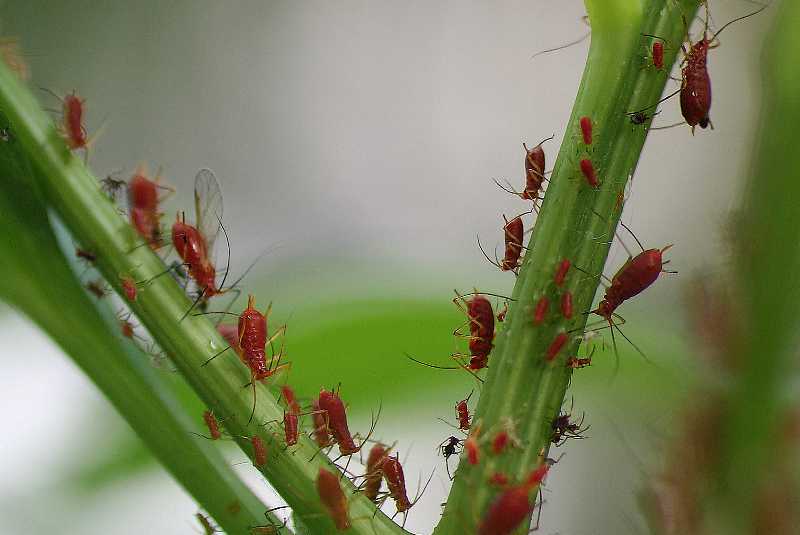 |
Aphids
That sticky substance on your car parked under a tree is most likely a sugary liquid called honeydew, which is being excreted by aphids feeding on the tree above. (See also scale below.) Natural predators usually keep the population low. A forceful spray of water may give some control. |
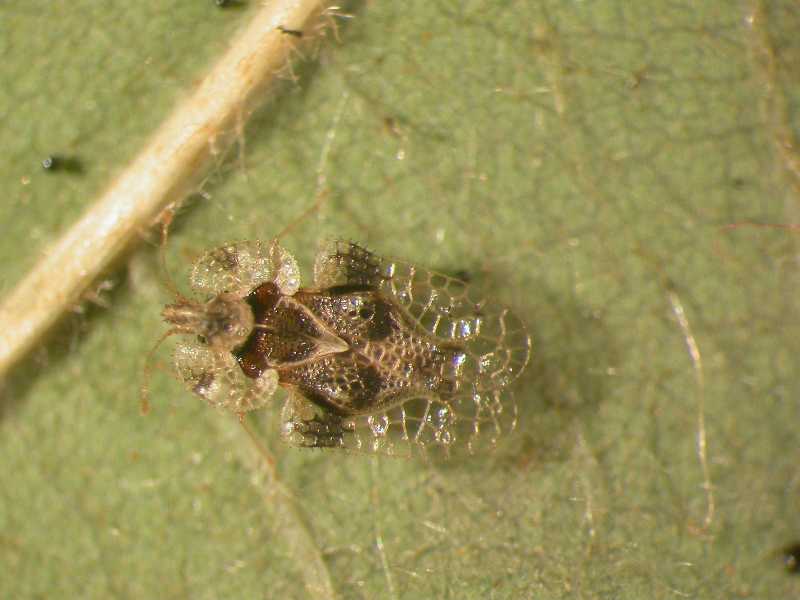 |
Lace bugs
Lace bugs feed on the underside of leaves. They have distinctive lacy wings. They are “dirty” insects and their presence can be surmised from the many tar-like spots they deposit on the underside of the leaf. Leaves take on a dull, stippled appearance before turning brown. A forceful spray of water may give some control. |
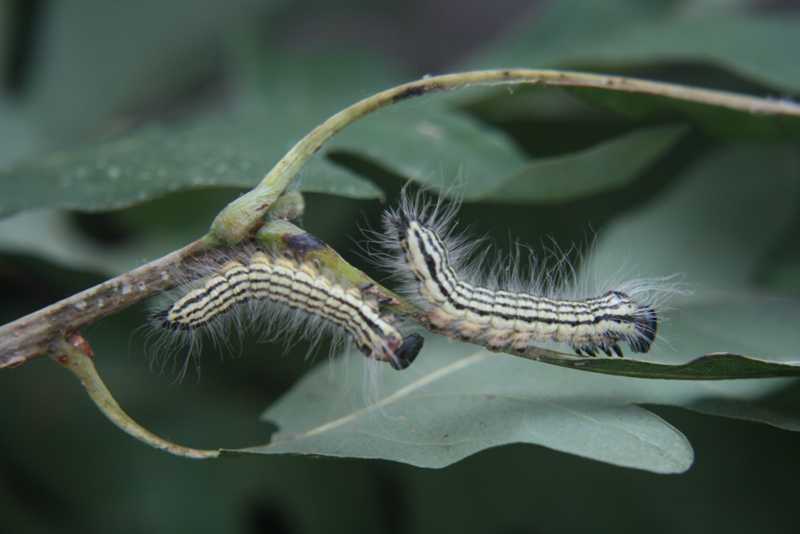 |
Caterpillars
A broad range of caterpillars (larvae of moths and butterflies) feeds on the leaves of trees resulting in jagged holes or edges of leaves. In small numbers they do little lasting damage. Monitor and treat with a biological control called Bt (Bacillus thuringiensis) if the population gets high. |
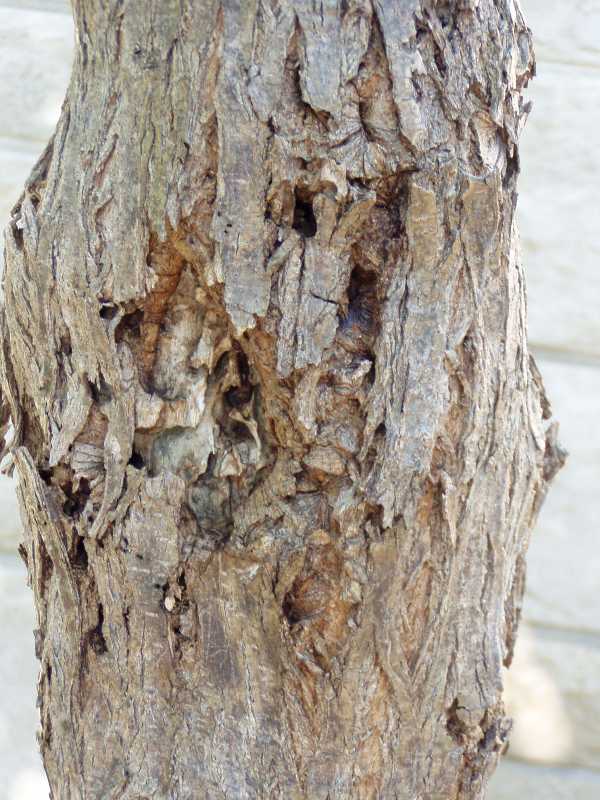 |
Borers
Several borers are present in our area. They are most bothersome on trees in poor or declining health. Common trees attacked include ash, lilac, dogwood, peaches, plums, and apricots. Once a tree is infested little can be done to save the tree, so prevention and early detection are your best safeguards. |
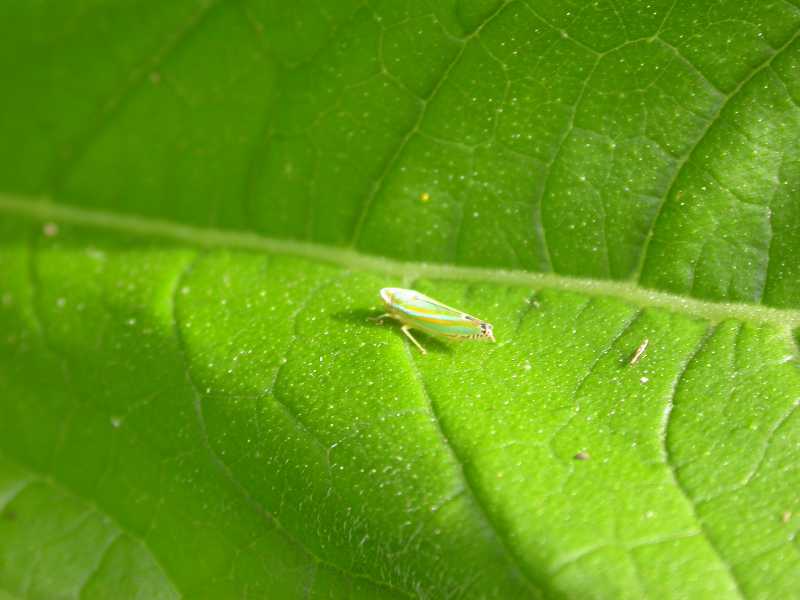 |
Leafhoppers
Leafhoppers are very common insects. They usually feed on the underside of leaves by piercing the leaf and sucking the sap. They may run sideways or hop away when approached. Most leafhoppers do little direct damage but some transmit virus diseases, which can be damaging. Feeding results in a stippled appearance on the leaf. |
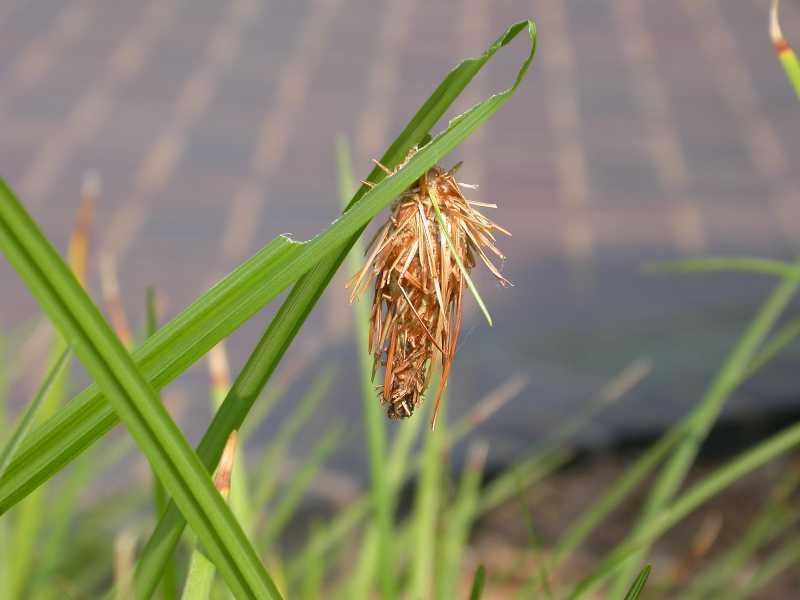 |
Bagworms
Bagworms are commonly noticed on junipers and arborvitae but also feed on many deciduous trees and shrubs. The distinctive bags harbor a caterpillar. Handpicking on small trees is an effective control strategy. Proper timing of insect sprays when the young hatch in May is effective. |
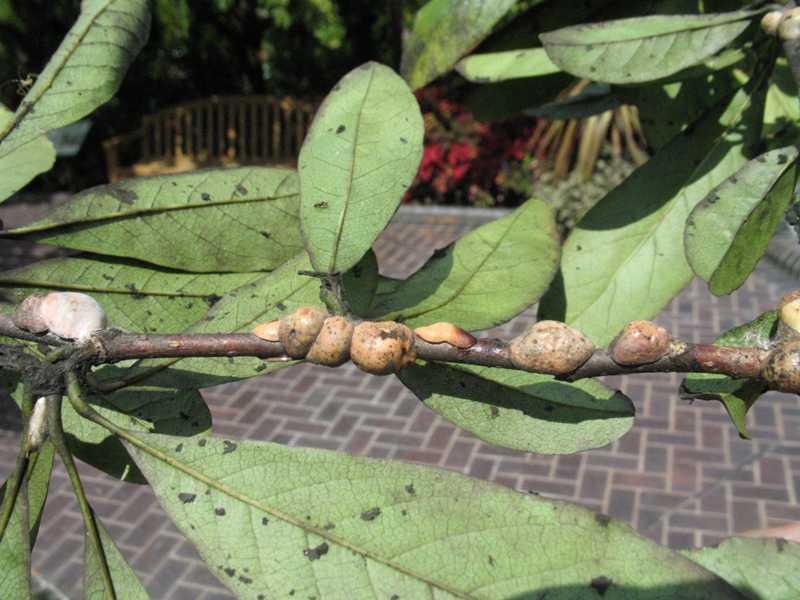 |
Scale
Scale insects are common pests of many trees and shrubs. Some produce honeydew, a sweet sticky substance. The insects are protected under a hard shell where they pierce the twig and suck sap. Large numbers can reduce plant vigor. Keep your tree vigorous. Severe infestations may require a professional arborist to treat with an insecticide, but a downside of chemical treatment is that natural predators may also be killed. |
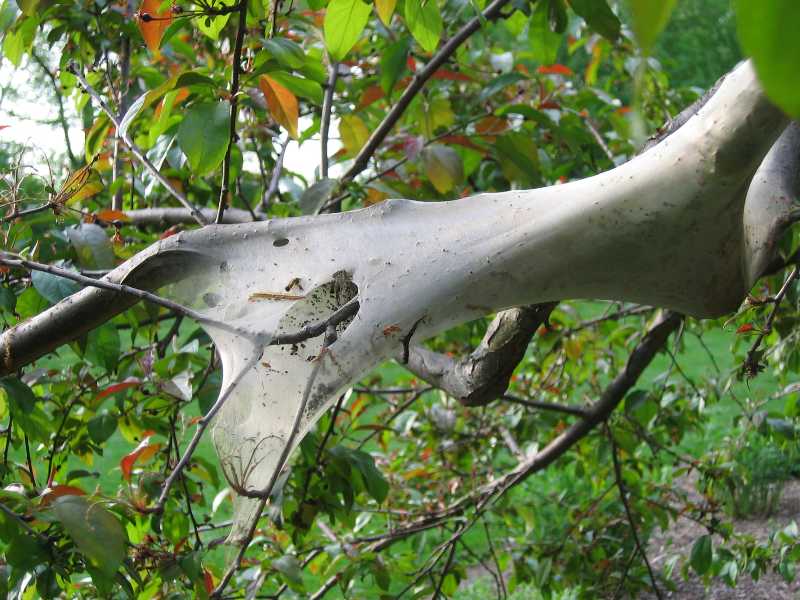 |
Eastern tent caterpillar
Conspicuous tents in the crotches of trees in spring signal the presence of eastern tent caterpillars. Webs can be broken apart when noticed. Examine trees in winter and remove the distinctive egg masses before the young hatch and make their webs. |
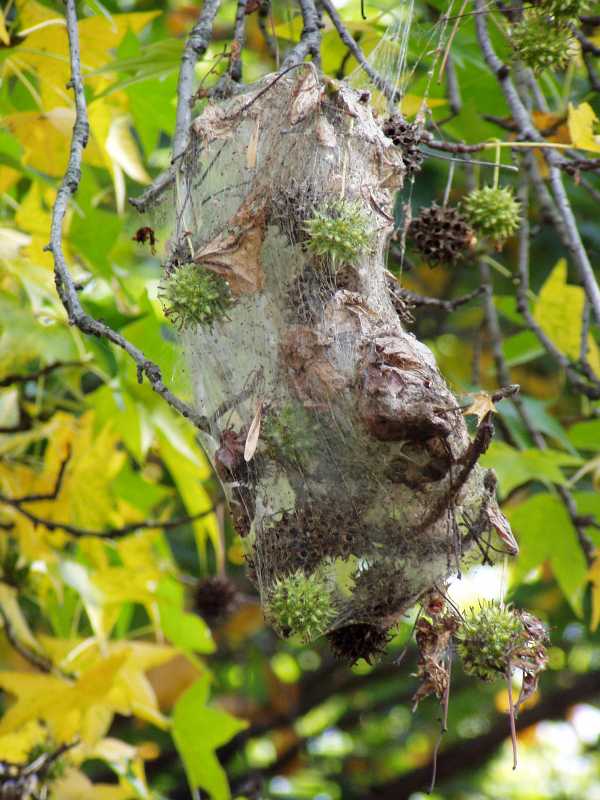 |
Fall webworm
The fall webworm is another caterpillar that forms webs but webs are on the ends of branches and appear in summer to early fall. Small infestations cause little if any damage. Prune out and dispose of the webs when practical. |